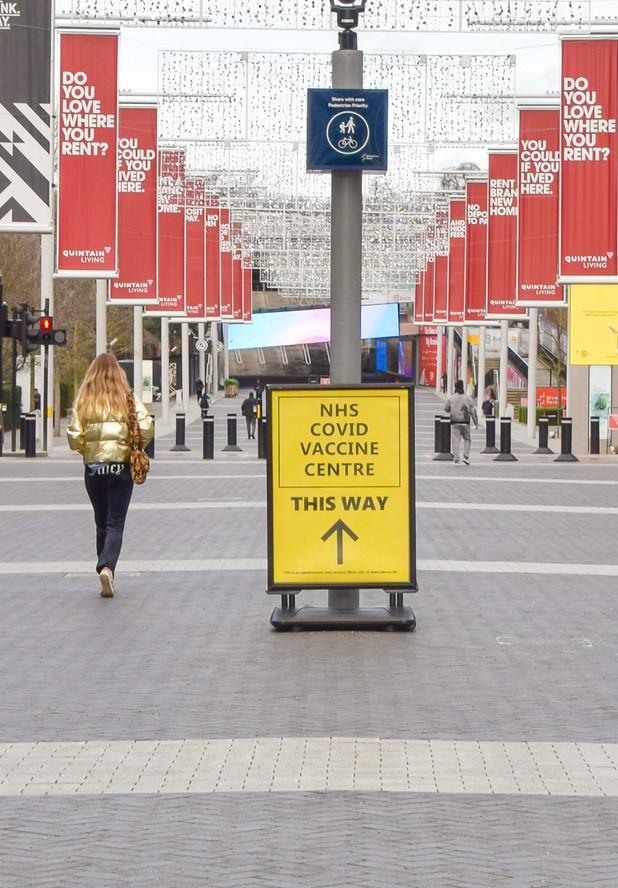A UK phase 2 trial shows that different COVID-19 booster shots are safe and boost immunity when given 10 to 12 weeks after two doses of the AstraZeneca/Oxford or Pfizer/BioNTech vaccines, although immune responses varied widely.
In the study, the first randomized trial of COVID-19 booster-provoked immune response, a team led by University of Southampton researchers evaluated safety and immune response among 2,878 participants 30 years or older who received one of seven experimental or control COVID-19 boosters from Jun 1 to 30, 2021. The findings were published yesterday in The Lancet.
Median patient age among participants who had received two doses of the AstraZeneca vaccine 70 or more days earlier was 53 years in one group and 76 in the other; 46.7% were women, and 95.4% were White. Among the two groups who had received two doses of the Pfizer vaccine at least 84 days before, median ages were 51 and 78 years; 53.6% were women, and 91.9% were White.
At 18 sites, participants were classified into three groups (A, B, and C) and randomly assigned to receive an experimental or control vaccine. Group A received the Novavax vaccine, a half dose of Novavax, AstraZeneca, or the quadrivalent (four-strain) meningococcal conjugate vaccine as a control. Group B received Pfizer, Valneva, a half dose of Valneva, Janssen (Johnson & Johnson), or the control vaccine, and group C received Moderna, CureVac, a half dose of Pfizer, or the control.
Wide range of immune responses
Among participants who had received two doses of the AstraZeneca vaccine, spike immunoglobulin G (IgG) antibody geometric mean ratios (GMRs) (indicating immune response) between the boosters and controls ranged from 1.8 in participants who received a half-dose of the Valneva vaccine to 32.3 in those given Moderna. GMRs for wild-type cellular responses versus controls ranged from 1.1 for AstraZeneca to 3.6 for Moderna.
Participants who had received two doses of the Pfizer vaccine had spike IgG GMRs ranging from 1.3 for those who received a half dose of the Valneva booster to 11.5 in the Moderna group. GMRs for wild-type cellular responses versus controls ranged from 1.0 for those receiving a half dose of Valneva to 4.7 for Moderna. The findings were similar between those 30 to 69 years and those 70 and older.
In a Lancet press release, trial lead Saul Faust, MBBS, PhD, of the University of Southampton, said that the results are promising. "It's really encouraging that a wide range of vaccines, using different technologies, show benefits as a third dose to either AstraZeneca or Pfizer-BioNTech," he said.
"That gives confidence and flexibility in developing booster programmes here in the UK and globally, with other factors like supply chain and logistics also in play."
Serious adverse events uncommon
The most common local and systemic adverse events were fatigue, headache, and pain at the injection site, which occurred more often in participants 30 to 69 years old than those 70 and older.
Serious adverse events were uncommon and similar in both the active vaccine and control groups. Three booster vaccine combinations were more likely than others to cause adverse reactions: Moderna after two doses of AstraZeneca or Pfizer and AstraZeneca or Janssen after Pfizer.
Twenty-four serious adverse events occurred—five in the control group (two in control group A, three in control group B, and none in the control group C), two in the Janssen group, five in the Valneva group, one in the half dose of Valneva, one in Pfizer, two in the group who received a half dose of Pfizer, two in the AstraZeneca group, one in the CureVac group, two in the Novavax group, two in those who received the Novavax half dose, and one in the Moderna group.
The study authors noted that the interval between the second vaccine dose and booster was shorter than between the first two doses in most participants, which could lessen the immune response after the booster.
"Substantial differences in humoral and cellular responses, and vaccine availability will influence policy choices for booster vaccination," the authors wrote.
The researchers said that policy makers and national immunization advisory groups should establish criteria for choosing which booster vaccines to use in different patient groups.
"This decision should be based on immunological considerations, known side-effect profiles, in-country availability, and ultimately a decision on what level of boost is sufficient in the context of national strategic disease control objectives," they concluded.





















